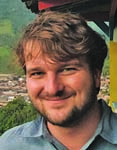
Timothy Duff
University of Washington
Constitution A, Sheraton Boston
Systems of multivariate polynomial equations are ubiquitous throughout mathematics and neighboring scientific fields such as kinematics, computer vision, power flow systems, and more. Numerical homotopy continuation methods are a fundamental technique for both solving these polynomial systems and determining more refined information about their structure. A research community has blossomed around the subject, with important work on both basic methods and applications that are ripe for sharing with a general mathematical audience. This two-day short course, organized by Timothy Duff, University of Washington, and Margaret H. Regan, Duke University, will offer six introductory lectures on the theory of polynomial systems, homotopy continuation, and their applications. Our six speakers represent a broad and diverse cross-section of researchers working on basic methods and applications of homotopy continuation.
Continuation methods are a well-studied subject in numerical analysis. They are especially potent when applied to problems where polynomial equations depending on both certain unknown quantities (variables) and physical measurements (parameters) must be satisfied. By working over the complex numbers, many of these methods enjoy the property of being globally convergent with probability one. For instance, a general parameter continuation theorem (established by Morgan and Sommese in 1989) establishes that all isolated solutions can be computed via tailor-made homotopies which operate in a problem's natural parameter space. Another useful paradigm (introduced in the 90s by Sommese, Wampler, and Verschelde) is numerical algebraic geometry, allowing these techniques to be extended to problems whose solution sets are not 0-dimensional. A number of freely available software packages exist: most prominently, Bertini, HomotopyContinuation.jl, HOM4PS, NAG4M2, and PHCPACK. These tools power latest advances in polynomial homotopy continuation, with an array of conferences and research programs worldwide reflecting the latest developments.

University of Washington
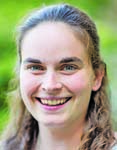
Duke University
January 2-3, 2023, 9:00 to 11:30 a.m. and 1:00 to 5:00 p.m. both days., Sheraton Boston Hotel, 39 Dalton St, Boston, MA 02199
The six lectures in the course will be broken across the two days and are 45 minutes long, with 15 minutes for questions and discussion. Problem sessions are planned for both days, and speakers and organizers will be available to assist participants with these exercises. Some exercises will be facilitated by numerical software such as Bertini, Macaulay2, MATLAB, or Julia. Participants with a desire to experiment with computations and an interest in applications should find this experience especially stimulating. The speakers will also provide participants with a list of research questions to guide their explorations after the course.
Please bring your laptop to the course, and if possible, download Bertini, Macaulay2, MATLAB, or Julia before the course starts.
The minicourse will not assume any background in algebraic geometry or numerical analysis (although participants with knowledge of either are still encouraged to attend). The lectures will be appropriate for a beginning graduate student (or advanced undergraduate) with knowledge of linear algebra, algebra, and geometry. In preparation for the short course, participants looking for a brief introduction to homotopy continuation methods may wish to consult the survey "Introduction to Numerical Algebraic Geometry" (Sommese, Wampler, Verschelde); see https://janv.people.uic.edu/Articles/intro.pdf. In particular, we recommend developing some familiarity with the material in Sections 2, 3.1-3.3, 4.4-4.5, and 5. For a more complete background, we recommend the following texts:
 Silviana Amethyst is a computational and visualizing mathematician at the University of Wisconsin-Eau Claire. She has worked on a number of software projects in numerical algebraic geometry, including Paramotopy, Bertini_real, the experimental Bertini 2 package, and has made contributions to Bertini 1. Her favorite mathematical subjects are singular real algebraic surfaces. Lately, she's been getting into hybrid 3d printed and electronic art projects. Silviana's love of the Barth Sextic, like the surface itself, knows no bounds.
Silviana Amethyst is a computational and visualizing mathematician at the University of Wisconsin-Eau Claire. She has worked on a number of software projects in numerical algebraic geometry, including Paramotopy, Bertini_real, the experimental Bertini 2 package, and has made contributions to Bertini 1. Her favorite mathematical subjects are singular real algebraic surfaces. Lately, she's been getting into hybrid 3d printed and electronic art projects. Silviana's love of the Barth Sextic, like the surface itself, knows no bounds.
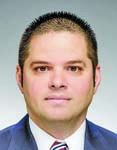 Jonathan D. Hauenstein is a professor and chair of the Department of Applied and Computational Mathematics and Statistics at the University of Notre Dame. Prior to joining the faculty at Notre Dame, Dr. Hauenstein was an assistant professor at North Carolina State University and held postdoctoral positions at the Fields Institute, Mittag-Leffler Institute, and Texas A&M after earning a PhD in Mathematics from the University of Notre Dame in 2009. Dr. Hauenstein's research involves developing numerical methods for solving nonlinear equations which has been implemented in the software package Bertini and applied to a variety of science and engineering problems. Dr. Hauenstein is a Fellow of the American Mathematical Society and has been honored with various awards including a Sloan Research Fellowship, DARPA Young Faculty Award, Army Research Office Young Investigator Award, Office of Naval Research Young Investigator Award, and Notre Dame College of Science Research Award.
Jonathan D. Hauenstein is a professor and chair of the Department of Applied and Computational Mathematics and Statistics at the University of Notre Dame. Prior to joining the faculty at Notre Dame, Dr. Hauenstein was an assistant professor at North Carolina State University and held postdoctoral positions at the Fields Institute, Mittag-Leffler Institute, and Texas A&M after earning a PhD in Mathematics from the University of Notre Dame in 2009. Dr. Hauenstein's research involves developing numerical methods for solving nonlinear equations which has been implemented in the software package Bertini and applied to a variety of science and engineering problems. Dr. Hauenstein is a Fellow of the American Mathematical Society and has been honored with various awards including a Sloan Research Fellowship, DARPA Young Faculty Award, Army Research Office Young Investigator Award, Office of Naval Research Young Investigator Award, and Notre Dame College of Science Research Award.
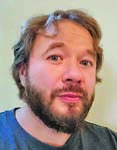 Anton Leykin studied at Kharkiv University (Ukraine) as an undergraduate and completed his PhD studies in 2003 at the University of Minnesota. Currently, he is a Professor at the School of Mathematics at Georgia Tech working in nonlinear algebra (computational and applied algebraic geometry). A large part of his recent research concerns homotopy continuation methods and includes development of theory, implementation of resulting algorithms in Macaulay2 computer algebra system, and engineering projects such as applications to computer vision. He is a member of the ACM, AMS, and SIAM.
Anton Leykin studied at Kharkiv University (Ukraine) as an undergraduate and completed his PhD studies in 2003 at the University of Minnesota. Currently, he is a Professor at the School of Mathematics at Georgia Tech working in nonlinear algebra (computational and applied algebraic geometry). A large part of his recent research concerns homotopy continuation methods and includes development of theory, implementation of resulting algorithms in Macaulay2 computer algebra system, and engineering projects such as applications to computer vision. He is a member of the ACM, AMS, and SIAM.
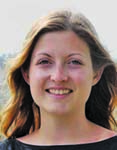 Julia Lindberg is a postdoc in the nonlinear algebra group at the Max Planck Institute in Leipzig, Germany. Her research is generally in applied algebraic geometry and has focused on applications in statistics, optimization and power systems engineering. She was the recipient of the John Nohel Prize for an outstanding thesis in applied math, the Excellence in Mathematical Research Prize, the Grainger Graduate Student Fellowship and the Sarah and Dave Epstein Fellowship. Prior to her graduate studies she completed a PhD in electrical and computer engineering, an MS in math and a BS in math and dance, all from the University of Wisconsin-Madison.
Julia Lindberg is a postdoc in the nonlinear algebra group at the Max Planck Institute in Leipzig, Germany. Her research is generally in applied algebraic geometry and has focused on applications in statistics, optimization and power systems engineering. She was the recipient of the John Nohel Prize for an outstanding thesis in applied math, the Excellence in Mathematical Research Prize, the Grainger Graduate Student Fellowship and the Sarah and Dave Epstein Fellowship. Prior to her graduate studies she completed a PhD in electrical and computer engineering, an MS in math and a BS in math and dance, all from the University of Wisconsin-Madison.
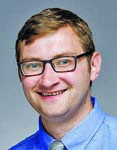 Mark Plecnik is an Assistant Professor at the University of Notre Dame in the Department of Aerospace and Mechanical Engineering. He researches the role of polynomial homotopy continuation to design novel machine geometries for usage as robots and other mechanical devices. The dynamics of machines "live" within the confines of kinematic configuration spaces, defined by early stage design choices on machine dimensions. Plecnik's primary focus is not to dominate these dynamics via motor control, but rather to alter them by reshaping the kinematic landscape through smart choices made on machine dimensions. He makes these design choices by searching for roots to large polynomial systems which are formulated to encode design requirements.
Mark Plecnik is an Assistant Professor at the University of Notre Dame in the Department of Aerospace and Mechanical Engineering. He researches the role of polynomial homotopy continuation to design novel machine geometries for usage as robots and other mechanical devices. The dynamics of machines "live" within the confines of kinematic configuration spaces, defined by early stage design choices on machine dimensions. Plecnik's primary focus is not to dominate these dynamics via motor control, but rather to alter them by reshaping the kinematic landscape through smart choices made on machine dimensions. He makes these design choices by searching for roots to large polynomial systems which are formulated to encode design requirements.
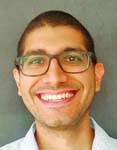 Jose Israel Rodriguez's research is in applied algebraic geometry and algebraic statistics. In Fall 2020 he started a tenure track position at UW Madison and was awarded the Nellie McKay Fellowship. Prior to his time at Madison, he was an NSF Postdoc with Jon Hauenstein and was a Provost's Postdoctoral Scholar at the University of Chicago with Lek-Heng Lim. He did his undergraduate studies at the University of Texas at Austin, where he became a McNair Scholar with Eric Katz as his faculty mentor. After getting a bachelors degree in pure math, he began the PhD program at University of California, Berkeley, where he was awarded a Chancellor's Fellowship and was advised by Bernd Sturmfels.
Jose Israel Rodriguez's research is in applied algebraic geometry and algebraic statistics. In Fall 2020 he started a tenure track position at UW Madison and was awarded the Nellie McKay Fellowship. Prior to his time at Madison, he was an NSF Postdoc with Jon Hauenstein and was a Provost's Postdoctoral Scholar at the University of Chicago with Lek-Heng Lim. He did his undergraduate studies at the University of Texas at Austin, where he became a McNair Scholar with Eric Katz as his faculty mentor. After getting a bachelors degree in pure math, he began the PhD program at University of California, Berkeley, where he was awarded a Chancellor's Fellowship and was advised by Bernd Sturmfels.
| Day 1 - January 2 | |
| 9:00 a.m. - 10:00 a.m. | Lecture 1: Jonathan Hauenstein, Introduction to homotopy continuation |
| 10:00 a.m. - 10:30 a.m. | Coffee Break |
| 10:30 a.m. - 11:30 a.m. | Lecture 2: Anton Leykin, Numerical algebraic geometry toolbox |
| 11:30 a.m. - 1:00 p.m. | Break for Lunch |
| 1:00 p.m. - 2:00 p.m. | Lecture 3: Silviana Amethyst, Numerical algebraic geometry in Bertini |
| 2:15 p.m. - 4:00 p.m. | Problem Session |
| 4:10 p.m.- 5:00 p.m. | Software Panel |
| Day 2 - January 3 | |
| 9:00 a.m. - 10:00 a.m. | Lecture 4: Jose Rodriguez, Maximum likelihood degrees: statistics, topology, and algebra |
| 10:00 a.m. - 10:30 p.m. | Coffee Break |
| 10:30 a.m. - 11:30 a.m. | Lecture 5: Julia Lindberg, Numerical algebraic geometry for the power flow equations |
| 11:30 a.m. - 1:00 p.m. | Break for Lunch |
| 1:00 p.m. - 2:00 p.m. | Lecture 6: Mark Plecnik, Kinematic design |
| 2:15 pm. - 4:00 p.m. | Problem Session |
| 4:10 p.m. - 5:00 p.m. | Applications Panel |
It will be very useful to download and experiment with various software: particularly relevant to this course are: